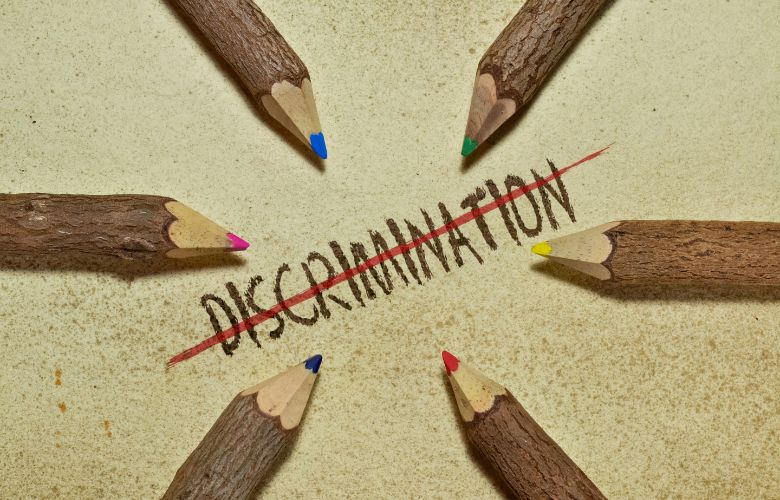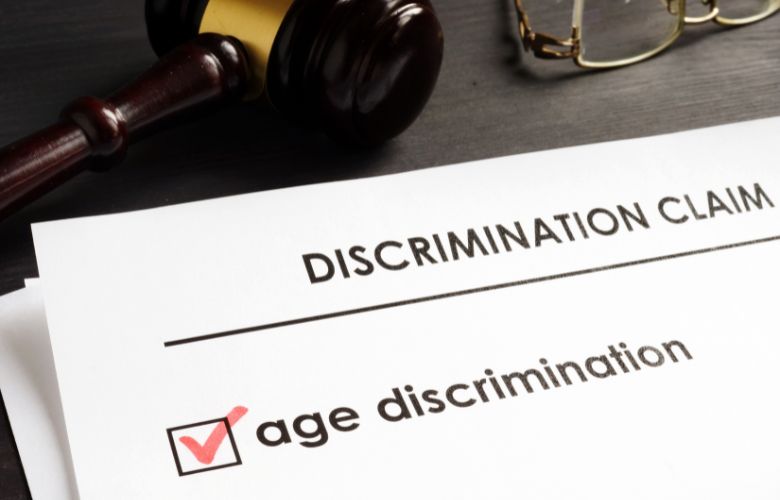What is Employment Discrimination?
Employment discrimination can be based on several protected attributes. These may include age, sex, race, sexual orientation, disability, marital status, political opinion, pregnancy, and more that acts as a stressor and affects an individual’s well-being. According to Australian federal anti-discrimination laws, it is illegal to be treated less favourably than others based on personal attributes more than abilities.

Examples of Discrimination in the Workplace Can Look Like –
- Denial to transfer, promote, train, or hand in new opportunities.
- Refusal to provide a job.
- Not being paid as much as other employees working in the same position, with the same experience and skill set.
- Exclusion by coworkers
- Not being provided with enough information required to do the job.
- Being talked to in scornfully derisive or mocking ways.
- Having to face taunts or humiliation from other employees.
- Being subject to making fun of
Efforts to Reduce Employment Discrimination
Discrimination is harmful! But this is preventable! Necessary steps taken by the employer can reduce employment discrimination before they become problematic and take a substantial negative turn.
Since it is the employer’s prime duty to protect the welfare and safety of their employees, here is what they can do!
- Make workplace policies on discrimination and educate your employees on the same.
- Train your employee on how to identify and respond to discrimination in the workplace.
- Encourage your employees to respect and cooperate.
- Appoint a capable team to take care of complaints related to discrimination.
- Train your employees to report any complaints or evidence of indifferent behavior.
- Make rules to deal with complaints of discrimination confidentially, on time, and promptly.
- Train your superiors to react and respond in an acceptable way to discrimination in the workplace.
- Make sure you enforce workplace discrimination policies properly.
- Review and revise your policies in intervals to maintain their efficiency and effectiveness.

⇒ Benefits of Using a Recruiter to Find Your Right Job (2023) Click Here
6 Most Common Types of Employment Discrimination
Discrimination can be indirect or direct, intentional or unintentional. It can come in the form of jokes or offhand comments, which might get swiped off by you or go unnoticed. Or, it can be in the form of significant and severe actions from the perpetrator which might affect you.
The below discrimination types and examples show some discrimination based on protected attributes that can occur in the workplace.
1. Age Discrimination

Age discrimination can occur when an individual is treated less favourably or not given the same opportunity as others because they are considered too young or too old.
According to Age Discrimination Act 2004 (ADA), discrimination based on age is prohibited. It can be young or older workers alike.
Example 1- David is a young 19 years old boy who has applied for a position in an accounting firm. He has excellent grades and freelancing experience, too but gets passed over. When he asked the reason for him being passed, in response to his question, HR said, ‘we want people who have a stable mind and not young men who might move on to another job quickly.’
Example 2 – John is a 44 years old man who has had a successful career in strategy and business development and applied for a higher position, which he qualifies very well for. But, he saw the company hired someone with less experience and skills. When he asked the management, they replied that they want the youth with fresh minds and new ideas to take over the department and take business development up a notch.
2. Sex Discrimination

According to the Sex Discrimination Act 1984 (SDA), discrimination based on sex involves denying the same opportunity to a person because of their sex, marital or relationship status, pregnancy or potential pregnancy, breastfeeding, gender identity, family responsibilities, sexual orientation, and intersex status.
This act also prohibits sexual harassment.
Since sex discrimination can be based on several things, let us understand what factors can pose risks so that we can take reasonable steps to surf through it smoothly and protectively.
- Pregnancy – The Sex Discrimination law prohibits any discrimination or adverse treatment with a job application or an employee because of childbirth, pregnancy, or other pregnancy-related conditions.
Example – Mia is four months pregnant. After working for twelve years in a marketing firm, she applied for a senior position in her company. Although her experience and skills were considerably more remarkable than the other applicants, she was passed over. Upon asking the manager for a reason for the pass, he explained, ‘I need someone who can work dedicatedly for the position.’
- Marital/ Relationship Status – Marriage or relationship status cannot be used as a basis for discrimination according to the Sex Discrimination Act. Relationship status includes married, single, divorced, a widow in a de facto relationship, never married, or a same-sex relationship.
Even if there is a practice or policy which is the same for everyone but affects every person in a different way who is in a different type of relationship – it is also discrimination.
Example – If a company allows married employees to work from home or offers them leave to visit their families, it can be a disadvantage for single people or people in de facto relationships.
- Carers – Caring responsibility can include caring for a disabled person, children, people with chronic illness, or older people. Many employers at different phases of life might have this responsibility. If a person is differentiated in their workplace based on their caring responsibilities, they can take action against their employer.
Discrimination based on caring responsibility is illegal under the Sex Discrimination Act and Disability Discrimination Act.
According to the Sex Discrimination Act, it is unjust to discriminate against people who look after their family members.
Under Disability Discrimination Act, it is against the law to discriminate against a person because of their association with a disabled person.
Example – Olivia, who recently became a mother, requires a hybrid working system – that is if she can work half time from the office and half time from home, and flexibility in the working hours because she wants to take care of her baby. But, the request was disapproved and came with a warning which reads, ‘You must work dedicatedly from the office full time, or you can take care of your responsibilities.’
If you have been a victim of discrimination and want to report it to get justice, you can seek help to promote gender equality.
- Sexual Orientation – Discrimination based on gender identity, sexual orientation, or intersex status is unlawful under the Sex Discrimination Act.
Example 1 – Jack works in a restaurant. His colleagues recently found out he is gay and started calling him princess and inciting him differently, which disconcerts him.
Example 2 – Noah did not get a promotion to a higher level because he is bisexual.
Example 3 – If a company policy is offering benefits to William’s wife or Amelia’s husband, like a travel discount coupon or gym package, not provided to employees with same-sex partners, it is creating a disadvantage for them based on their sexual orientation – which is illegal.
3. Disability Discrimination

According to Disability Discrimination Act, it is against the law to discriminate against a person based on their disability.
The disability discrimination act covers permanent and temporary disabilities, including physical, intellectual, neurological, sensory, learning and psychosocial, physical disfigurement, diseases or illness, medical conditions, and work-related injuries.
While there may be much to be achieved to fully realize the human rights of people with disabilities in the Australian context, the Convention on the Rights of Persons with Disabilities (CRPD)acknowledges that change is to be pursued through the progressive realization of the obligations outlined in its articles. To prevent discrimination based on disability, the CRPD is working to ensure and promote the full realization and understanding of all fundamental freedoms and human rights for people with disabilities. Since disability is already a challenge for them, the restriction and unjust behavior of others should not make them more disabled.
Besides, this also includes a clause for employers to clear barriers and challenges that people with disability may face. These changes are termed making – Reasonable Adjustments. Failure to make these changes is described as discrimination.
You can ask the Federal Government to provide financial and other assistance for reasonable adjustments.
- Example 1 –Discrimination occurs when someone with partial colour blindness is still passed over for the job, even though it does not affect their ability to perform the job.
- Example 2 – If premises do not have wheelchair accessibility which restricts the person’s ability to enter the company premises – the situation is termed discrimination.
- Example 3 – When the hearing test revealed that the applicant had less than 70% of the ability to hear, the employer rescinded the offer of employment offered to the applicant for the accountant role.
4. Racial Discrimination

According to the Racial Discrimination Act 1975 (RDA), it is unjust to discriminate against a person because of their race, descent, colour, national origin or ethnic origin, or immigrant status.
Racial discrimination can take many forms, including calling them by nationality, race, colour, making jokes, name-calling, verbal abuses, harassment or intimidation, or doing anything that inflames hostility against an individual or a particular racial group. Unfavourable treatment can result in racial discrimination.
Example 1 – Displaying racial hatred posts in the workplace.
Example 2 – Not accepting the application of a person of another nationality and instead appointing other people in their place with fewer skills and abilities.
Example 3 – A lady applied for the customer service position but got rejected because she had an Indian accent.
5. Bullying

When other coworkers of the organization do insensible activities, conduct, or make use of words desired to insult the other worker then it comes under workplace bullying. It can include interrupting the work of other employees, inappropriately interfering in their work or advancing offensive, intimidating, or mocking comments or actions continuously.
Any act of bullying, including yelling, screaming, or using offensive language linked to protected characteristics, including sex, age, race, or disability, is termed unlawful under federal anti-discrimination laws and the Fair Work Act 2009 (Cth).
Example 1 – Rayan was bisexual. After his colleagues learned of this, they began referring to him by different names and excluded him from the group.
Example 2 – John was a newbie in the company with an experience of one year. Since he was adjusting to the work environment and dealing with clients, it took him a while to get comfortable. When he took a bit longer than other team members, his colleagues bullied him, and he had an intellectual disability.
6. Dating in the workplace

It is human nature to get attracted and develop a relationship in the workplace. But any incident leading to sexual harassment will be unlawful.
Even if two individuals are involved in a consensual sexual relationship, it does not mean it can not lead to any sexual harassment. Sexual harassment can occur even when two people are in a consensual relationship.
Example – If a boss and an employee were involved in intercourse on seven occasions. However, the boss tried to get engaged on such an occasion when the employee was not in favour of getting engaged, but the boss still spent time sending explicit messages, and gifts of sexual nature, and attempted to touch abruptly without consent, it is seen as sexual harassment.
Thus, if an employee refuses to do a sexual favour to their boss while dating them in the workplace, the employer may treat them less favourably and discriminate against them.
⇒ Staying Creative in Australia: 10 Great Arts and Crafts Jobs Click Now
What To Do If You Are Discriminated Against
Review Your Employer’s Anti-Discriminatory Policies –
The purpose of an employer’s anti-discriminatory policy is to ensure that every employee gets respect for their unique attributes and does not get excluded, bullied, or harassed in any way. Those coworkers or employers who commit discrimination, harassment, or cause victimization through unlawful actions, such as stereotypical biases or comments, will be penalized.

It is essential to review these policies to stay informed and set expectations.
Discuss It With Your Employer –
Before you take any direct legal action, you must discuss it with your employer. They most likely have a complaint procedure or a harassment contact officer within their department, liable to discuss and resolve workplace harassment problems and concerns.
Document Your Experience –
Paper everything you experienced because the details of what you went through will be fresh in your mind shortly after the incident. Make sure to note each detail, including who was involved, what happened, how things got accelerated, what they did, where it happened, and your reactions to the incident.
Documenting your experience will ensure you do not miss out on any details later when filing a complaint or discussing it with your employer.
Ask Your Employer For the Copy Of Reports or Action Plan They Make To Address The Situation –
Asking for a report and their action plan will keep them accountable for the situation. Moreover, it will give you a clearer idea of what you can expect.
Making a complaint to the Australian Human Rights Commission (If the employer fails to take action.)
If you were unable to resolve the issue, if the employer failed to settle the complaint, or depending on the severity of the incident, you must file a complaint to the Australian Human Rights Commission.
To file the complaint, you must enter all the details you noted while preparing the document of your experience. After your complaint submission, the Australian Human Rights Commission will respond with a prompt revert.
Communication With Employment Law Attorneys
Based on your experience and the current complaint situation, you must seek legal advice to know your options and how you must move further.
Contact Fair Work Ombudsman To Settle An Issue
The Fair Work Ombudsman can help you with any questions regarding your workplace. Here you can get answers to anything related to your workplace. Their main goal is to promote productive, harmonious, compliant, and cooperative workplace relations in Australia.
Get help from self-help tools to know your rights and what is the best way to deal with what you experienced.
Frequently Asked Questions
When an employee is discriminated against, they take the following steps:
- Talk to the employer regarding the situation.
- Document the experience in detail.
- Review the anti-discriminatory policies to know their rights and what they can expect.
- Stay in touch with HR or the employer to know the progress of the complaint filed.
- They take the help of the Australian Human Rights Commission, which has self-help tools to know their rights and lodge a complaint.
- Take to the employment law attorney to know their options.
When people are discriminated against, it affects the overall life of a person. It affects them in a range of things, such as lower self-esteem, poorer mental health conditions, higher anger, fears related to small things, sadness, embarrassment, a sense of alienation, and staying less and less engaged with people.
Discrimination is prejudicial and unjust treatment against a person based on their caste, religion, sex, gender, and other protected characteristics. Where harassment includes indifferent behaviour against someone, abusive and demeaning behaviour can include insulting jokes, humiliating someone through indifferent behaviour, and passing comments or taunts on an individual’s personal beliefs, race, religion, caste, or sex.
Any demeaning or abusive behavior is considered harassment which can include the following:
- Cracking insulting jokes specific to a particular racial group.
- Continuous and repetitive use of offensive words that might affect a particular person or a group of people.
- Epithets or name-calling
- Unwanted physical or verbal assault
- Creating, sharing, or repeating a rumor against someone
- Unwanted sexual behaviour, advances, conduct, like deliberate touching or cornering, waving hands on a body part, massaging shoulder, letters or calls of sexual nature, sexual looks or gestures, and more.
The significant causes of discrimination are retaliation, disability, sex, sexual orientation, race, religion, and more. It is not a secret that discrimination exists in society and workplaces, but it can be contained if strict policies are made, circulated, and followed appropriately.


